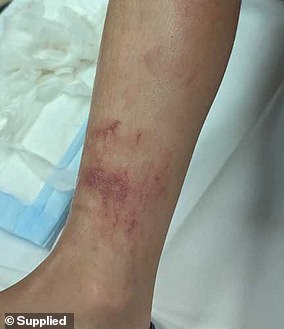Margarita burns: Aussie mum’s warning about a common kitchen ingredient that caused her children to become covered in a painful red rash
A Sydney mother has warned all parents about the unexpected dangers of lime juice after a ‘terrifying ordeal’ left her daughter and a friend’s son with major ‘burns’.
Felicity Frankish said that when her eight-year-old daughter Cassie complained that her fingers were burning on Easter Sunday, she didn’t pay much attention at first.
“She often experiences problems that disappear as quickly as they come,” Ms. Frankish wrote on the website North Shore Moms website, which she edits.
But this time it didn’t go away and it was more than a little thing.
“It wasn’t until we were riding the Sydney Family Show four hours later and she had tears in her eyes that I knew this was serious,” she said.
After a terrifying experience, a Sydney mother has warned all parents about the unexpected dangers of a food item commonly found in Australian homes. The rash it caused on Max’s stomach is pictured
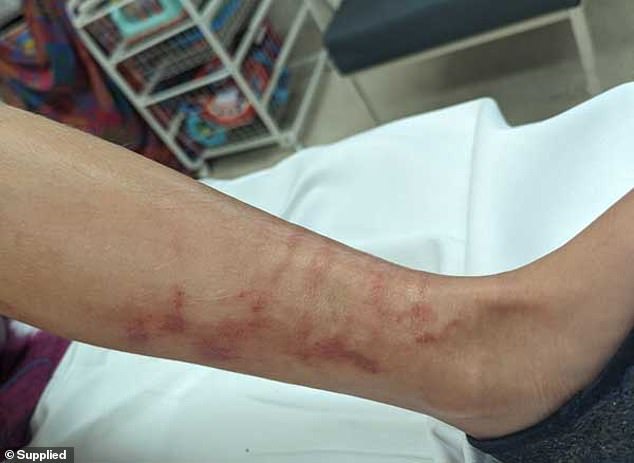
The painful margarita burns Mrs. Frankish’s daughter Cassie’s leg
By the time they got home to Sydney’s North Shore, the burning rash had spread across Cassie’s legs and she was in a lot of pain.
Mrs. Frankish immediately called the friend they had been with the day before to see if their son Max was experiencing something similar.
They said no, but a few hours later he got a rash too.
The parents assumed the children had contact rash, gave them antihistamines and started looking at all the clumps they had played with the day before.
“As we investigated, the pain got worse and blisters started to appear,” Ms Frankish said.
At this point they went straight to a GP to be diagnosed with a contact rash and were given steroids but these did not help.
“By the hour mark, we were seeing blisters appearing on our children’s skin, with no idea what had caused them,” she said.
Nothing made sense, so Ms. Frankish Googled the symptoms to see if she could find answers.
‘When I came across phytophotodermatitis, also known as margarita burn, everything was right. It was the limes.”
On Saturday afternoon, Cassie and Max had picked limes in Max’s garden and cut them up to make lime juice, dripping the lime on themselves.
The red rash turned out not to be a rash, but burns over their legs, fingers and Max’s stomach where the limes had touched them.
‘Lime contains furocoumarins, a class of chemicals found in some plants and fruits, which can cause sensitivity and burns when exposed to sunlight,’ explains Ms Frankish.
‘Something so innocent was actually so dangerous.’
They took the children straight to a hospital emergency room because the children’s pains were getting worse and needed to be treated for what they were.
But both children were diagnosed with contact rash again and offered steroids, as they were told it was not a margarita burn.
Ms Frankish stuck to her guns and urged one of the doctors to just look at it.

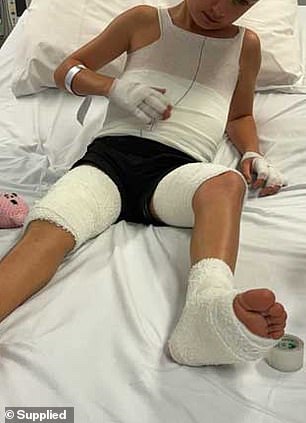
When Ms. Frankish’s eight-year-old daughter Cassie (left) said her fingers were burning on Easter Sunday, she didn’t pay much attention (her daughter’s boyfriend, Max, pictured right)

Felicity Frankish wrote on the North Shore Mums website, which she edits, that her daughter ‘often suffers from ailments that go away as quickly as they come’. But this time it wasn’t just a small thing
“After what felt like an eternity, the doctor came back convinced, started treating the burns and asked us to come back as an outpatient the next day,” she said.
But the next morning the blisters had multiplied and both Cassie and Max were in pain.
The parents decided to go to another hospital, hoping to skip the long wait the day before.
That meant I had to go through the whole process again and tell the nurses and doctors about the burnt margarita.
The medical staff in turn contacted Westmead Children’s Hospital, received appropriate advice and bandaged the children’s wounds, finally providing some relief.
However, the journey back to health was not over and the families took their children to the Westmead Burns Unit.
‘There, Cassie and Max finally received the care they needed. The skin, blistered and sore, was carefully treated and wrapped,” Ms Frankish said.
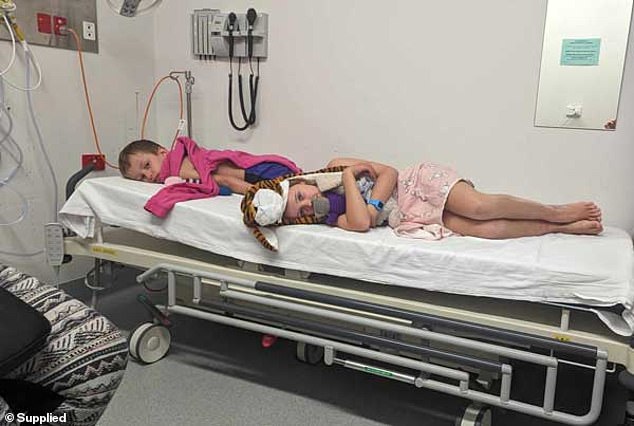
Max and his friend Cassie are pictured on a hospital cart while being treated for margarita burns
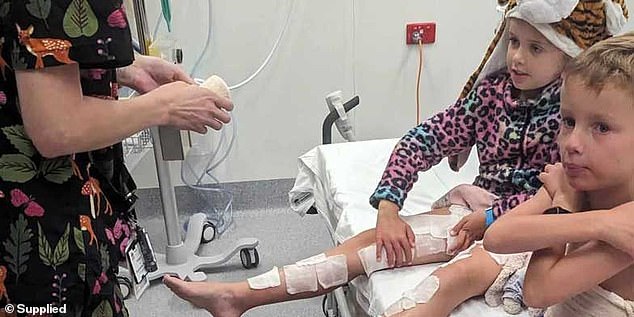
The children (photo) were in a lot of pain from the burns, which were initially thought to be a rash
‘This experience was a wake-up call for me. Something as simple as playing with limes in the backyard led to such a terrifying ordeal.”
She said she wanted to share this story with other parents, “in the hope that it can prevent a similar situation from happening and educate others about the hidden dangers that can turn an innocent day into a nightmare.”
“We had no idea that citrus could cause this or that we would never let our children play with the limes and would like to raise awareness,” Ms Frankish told Daily Mail Australia.
She added that although they had to go through a few hospitals for treatment, that was their personal choice, and “they have all been very helpful and we have not had any problems with the treatment at any step of the process.”

